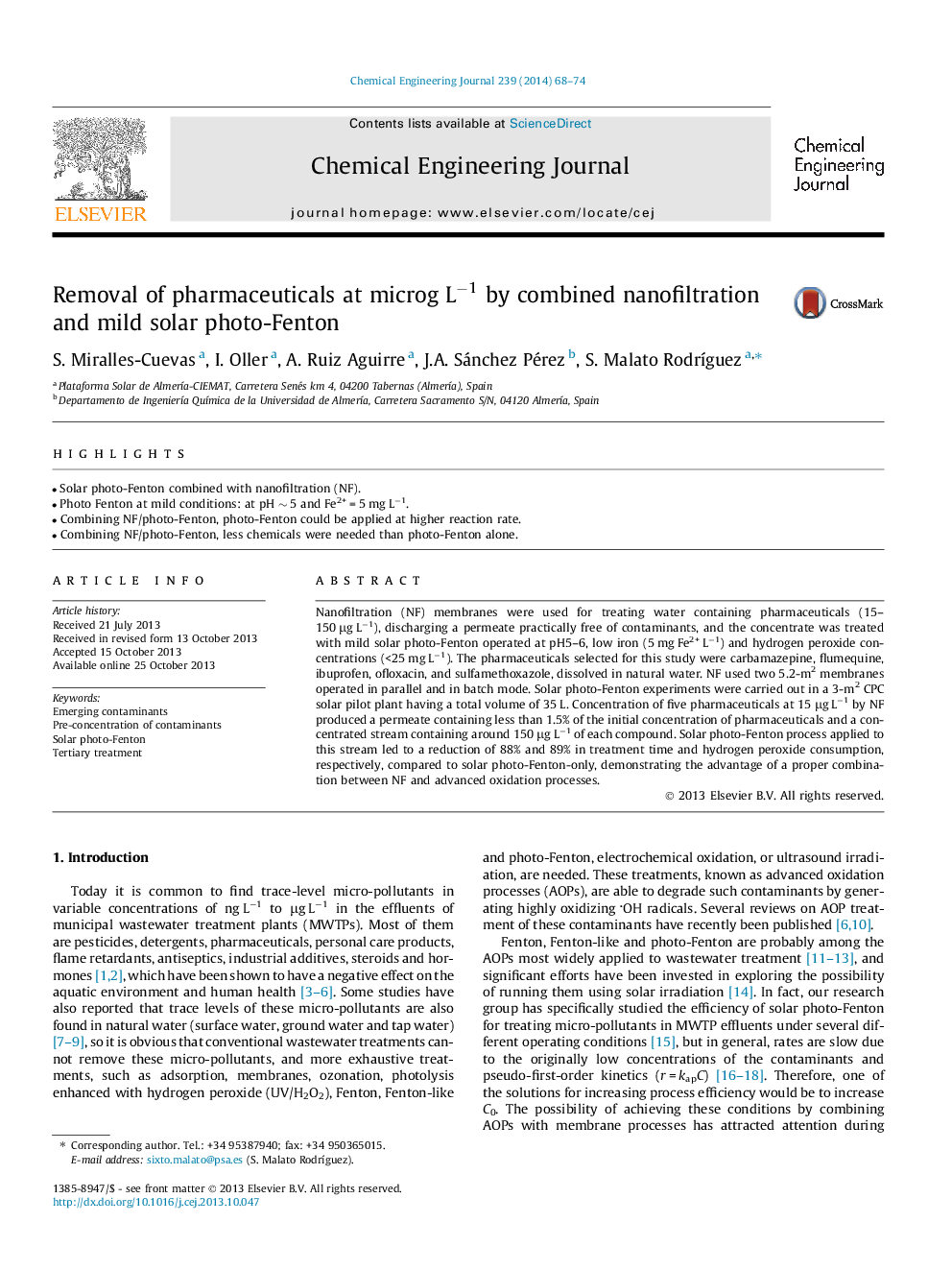| Article ID | Journal | Published Year | Pages | File Type |
|---|---|---|---|---|
| 147924 | Chemical Engineering Journal | 2014 | 7 Pages |
•Solar photo-Fenton combined with nanofiltration (NF).•Photo Fenton at mild conditions: at pH ∼ 5 and Fe2+ = 5 mg L−1.•Combining NF/photo-Fenton, photo-Fenton could be applied at higher reaction rate.•Combining NF/photo-Fenton, less chemicals were needed than photo-Fenton alone.
Nanofiltration (NF) membranes were used for treating water containing pharmaceuticals (15–150 μg L−1), discharging a permeate practically free of contaminants, and the concentrate was treated with mild solar photo-Fenton operated at pH5–6, low iron (5 mg Fe2+ L−1) and hydrogen peroxide concentrations (<25 mg L−1). The pharmaceuticals selected for this study were carbamazepine, flumequine, ibuprofen, ofloxacin, and sulfamethoxazole, dissolved in natural water. NF used two 5.2-m2 membranes operated in parallel and in batch mode. Solar photo-Fenton experiments were carried out in a 3-m2 CPC solar pilot plant having a total volume of 35 L. Concentration of five pharmaceuticals at 15 μg L−1 by NF produced a permeate containing less than 1.5% of the initial concentration of pharmaceuticals and a concentrated stream containing around 150 μg L−1 of each compound. Solar photo-Fenton process applied to this stream led to a reduction of 88% and 89% in treatment time and hydrogen peroxide consumption, respectively, compared to solar photo-Fenton-only, demonstrating the advantage of a proper combination between NF and advanced oxidation processes.
